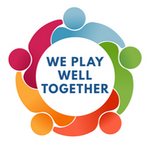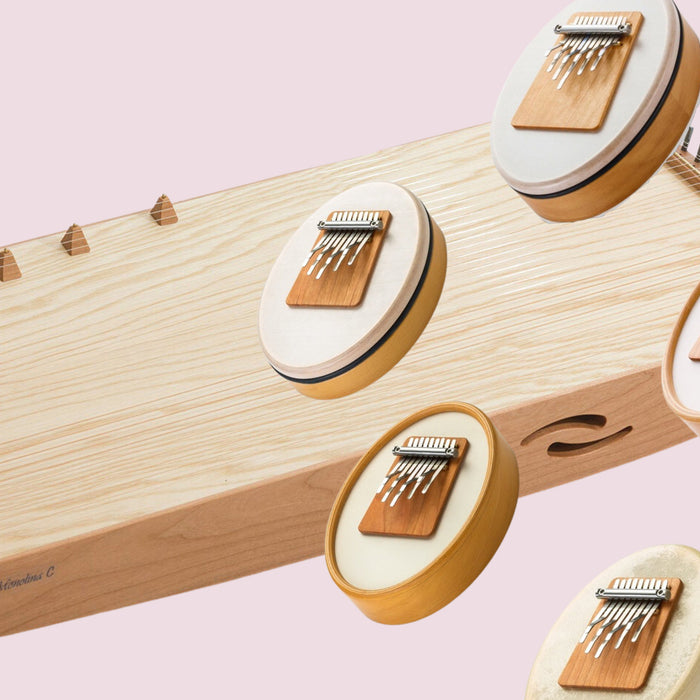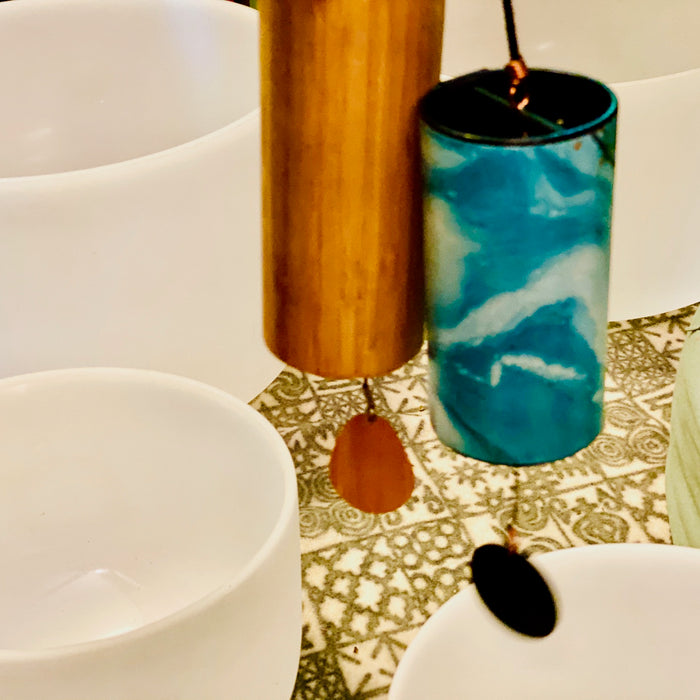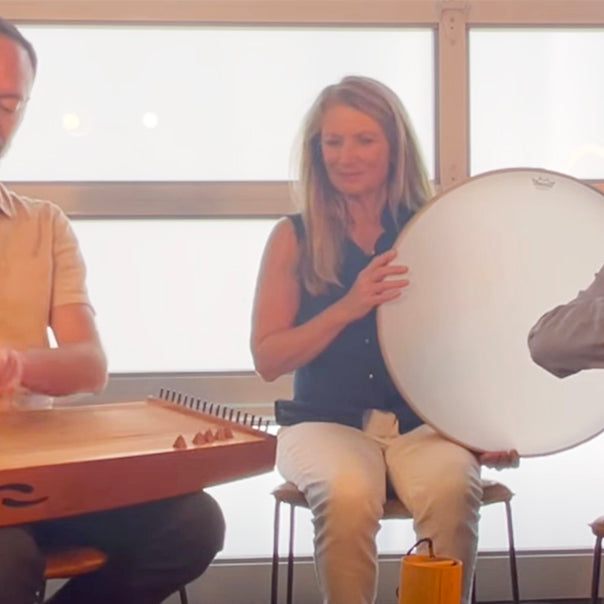
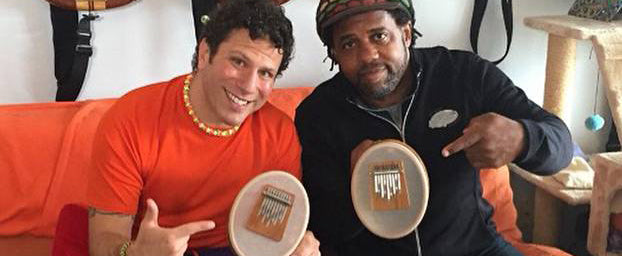
A Musician's Portrait: Brandon Blake
Portrait:
Brandon Blake, preschool teacher, head of the brain injury support group, writing artist, musician, volunteer for dogs in need and animal rights activist, was interviewed by the Hokema company in Germany about his daily use of the Kalimba Sansula. Interviewed by: Annalena Horl
Interview
Every day starts with “cat feeding”. If it wasn't, the animals wouldn't let me do anything until they got their feed. Then I prepare breakfast for my wife and me. We always use fresh ingredients from the market. On class days I pack my documents and, of course, the sansula for the preschool. I spend eight hours at school and focus on the social and emotional development of these impressive young souls. After such a working day, I am truly exhausted. I go home and rest to play sansula or bass afterwards. Then my wife Sabrina and I have dinner together, mostly with a cat on my lap. On days without lessons, I structure my daily routine somewhat more freely. Then I make music, practice calligraphy, take care of neglected greyhounds, talk to my parents or continue to work on my health status. In the evening we often have friends visiting, or we can be found at sporting events - or I play concerts. No matter what happened during the day, I try to play on the Sansula every night to clear my head. This relieves me of the pressure of everyday life and the Sansula is an excellent tool.
What's the best thing about your job?
In preschool, I primarily focus on supporting the children in their behavioral development. In doing so, we positively work out those behaviors that we need in our world today: friendliness, compassion, empathy, respect, love, humor or the ability to solve conflicts with words without becoming hurtful. I am the first teacher for these children and it is up to me and my team to make learning fun. I hope that every child has a good start in this lifelong journey of learning. I want to contribute to change and make sure that our next generation is no longer xenophobic, racist, aggressive or narrow-minded. I want the children to see each other as friends, appreciate their personalities and differences and respect for each other. Even if we are different, we are similar when we treat each other with love. So I teach kindness and the ability to learn to appreciate each other.
When did you get to know the Sansula?
I wanted a separation from my smartphone and the digital world within it. I wanted to be screen-free, take something in my hand, use my thumbs and make music - and not scroll through a digital world every minute. I needed a line of demarcation to be "attentive to thoughtlessness" and so the Kalimba was the perfect instrument for me. On April 20, 2015, my wife Sabrina and I stumbled into a music store called "Dusty Strings" in Seattle. I tried a few kalimbas, but Sabrina wasn't really thrilled with any of them. Then I saw one that was built into a small framed drum. What was that? When I took the HOKEMA Sansula and started to play, Sabrina turned and said: “You have to take it. It sounds fabulous. That is what we are looking for!" This was the beginning of a wonderful journey that Sansula took me with - and the journey has only just begun!"
How do you use the Sansula and what opportunities does it bring?
I use the Sansula in a few “key places” in my life. I use it as a pedagogical tool in preschool - to give the students a calm mood for naptime. And they fall asleep every time. At music time, the children can play the Sansulas and kalimbas themselves. The successful design of their melodious tone sequences motivates them to make music and they feel more secure in playing. I also use the Sansula when I play for the residents in a retirement home. For me, it represents a loving bridge between the generations and we share very nice musical moments. But I also use the Sansula as a healing measurement. When I play in the "Brain Injury Community". I have already shown many people that the instrument can have a kind of healing effect through careful playing. In addition, it is relatively easy to learn to play the Sansula - this means that people who have neurological and motor impairments can also have success with the instrument. Incidentally, I also use it for myself as a “cure”. It simply helps me to recover, has a meditative effect and is a tool for designing my "mindful, careless moments". But apart from that, you can just make great music with it. I perform regularly in Seattle's music scene and use the Sansula both solo and in projects with other musicians from all over the world. I developed new percussion and touch methods and use small magnets to enable even more effects. If you put the small magnets on the metal tongues, you can change notes and you can change the instrument depending on the song without a lot of tools.
Can you see the sansula as a serious tool?
Absolutely. I don't need to think about that for a long time, because it is self-explanatory for everyone who hears the Sansula. I took them to Tennessee and introduced them to Victor Wooten's world-famous Bass Nature Camp Wooten Woots. I showed my various playing techniques including the idea with the magnets. People were thrilled - both by the sound and the way they played. Victor Wooten and his brothers (all world-famous music virtuosos and also absolutely great people) said that they had never seen a person play the way I did before. The way I use the Sansula, they called it 'groundbreaking'. Victor later came to Seattle for a concert series and invited me to join him and the drummer J.D. Blair to stand on the stage. I was humbled and overwhelmed to be able to stand on one of Seattle's hippest jazz stages with my childhood idol. I performed with them for three evenings and enjoyed playing. It was perfect - even though I had only started playing Sansula nine months earlier. People actually wanted autographs and photos of me after the show, which was incredible. But it would never have happened to me if the HOKEMA Sansula were not simply a world-class instrument. You just can't say it any other way!
Which of the HOKEMA instruments would you call your favorite?
The Sansula Renaissance because of its durable drum and robust sound. This allows me to use the percussive techniques that I incorporate during the playing. In addition, it's also strong enough to be played by very young children without having to worry about damage. It's the only one of my instruments that my 100 year old grandmother can play.
Biographical information about your career
Brandon Blake has seen himself as a musician since he started to drum on his thigh at the age of five. At the age of thirteen he started playing bass guitar. A short time later he met his future wife Sabrina at Florida State University, with whom he played in a Balinese Gamelan orchestra. Brandon only met the Sansula after an all-changing accident happened ... It was July 25, 2013, when his life was about to change fundamentally - and was almost taken away from teaching at a Seattle pre-school as he was on his regular bicycle route home. A car raced towards him and hit him head-on. Life-threatening head injuries were the terrible result and Brandon was immediately put into an artificial coma. When he woke up the next day and was told what had happened, he was on an long, arduous path to recovery. Broken ribs, an almost completely smashed face and, to make matters worse, a violent traumatic brain injury that required extreme treatment. Brandon underwent a full facial reconstruction and still has 7 titanium plates under his skin. After completing the operations, he was allowed to return home and deal with how to continue living with a brain injury. From then on specialists, neurologists, and reconstructive surgeons accompanied his everyday life. Over 150 doctor's appointments and many months later, Brandon had had a hard cure, consisting of neuro-treatments, reconstructive measures, and discussions related to his traumatic brain injury. At that point, he was unable to continue his work as a preschool teacher - recovery and healing had become his full-time job. He quickly became an active member of the local brain injury community in Seattle and, through his positive outlook on life, helped those who suffered a similar ordeal. After two years, Brandon returned to the classroom. He hadn't lost his passion for helping others. In addition to teaching, he began to work in the "Brain Injury Community", where he now leads a group of young patients with brain injuries. "Those who were the first to be confronted with me after my accident kept telling me that it was unclear how I could survive with such head injuries. So if I'm no longer here and yet I am, I call this the “bonus time life”. Every day since, this stroke of fate has given me a new purpose and reward. The time with my students, with my wife, with friends, my cats ... and my Sansula! All this is bonus time and I don’t take it for granted. I am so happy to be here and to share my story with you.”
